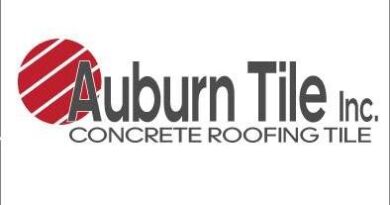Maximize Your Investments
Plan Your Trade Show Activity for Success
by Sam Everett, APR, owner, SE Marketing, LLC
(Editor’s Note: Sam Everett, APR, is owner of SE Marketing, LLC. For the past 14 years he was director of marketing communications for OMG® Roofing Products, where he managed all aspects of communications including the company’s trade show activity. Everett started his career in the roofing industry in 1984 while working at a large PR firm, and then spent ten years as director of marketing for Stevens Roofing Systems. He is an accredited PR professional through the Public Relations Society of America and holds a degree in communications from Boston University.)

For business-to-business companies, exhibiting at industry trade shows represents an opportunity to showcase new products, generate qualified sales leads, network, and reinforce brand messaging. But for most companies, trade show budgets are not only the largest single expense category in the marketing budget, accounting for 20% or more of the total, but can be difficult to measure in terms of return on investment. Below are some strategies that will help you measure the return and maximize your trade show investments.
Know Your Target Audience
There are trade shows in virtually every segment of every industry, and often multiple shows. Therefore, you need to carefully analyze who the trade show is reaching. Show management should be able to provide a detailed breakdown of the past show attendees for you to evaluate. If most of the past attendees are not part of your primary target audience, you might want to re-consider exhibiting.
One good strategy for evaluating a show in which you’ve never exhibited, or for first-year shows, is to audit the show before you commit company time and resources for exhibiting. Yes, this takes you out of the specific show for the year, but by personally attending, seeing the show firsthand, evaluating the traffic, observing how busy your competitors’ booths are, talking with show management and existing exhibitors, you’ll be able to ascertain whether the show is right for you. While this takes some time and effort, it can also save you thousands of valuable marketing dollars by avoiding a show that is too new or that does not quite reach your target audience.
Set Goals
Assuming you are exhibiting at the right show, your first task is to set show goals. While this seems like a commonsense exercise, many show exhibitors seem to skip this important step. But determining why you are exhibiting, who you are talking to, and what the company’s focus will be, are critically important to having a successful show and return.
Setting show goals should be like setting annual goals. The goals should be specific, measurable, achievable, relevant, and timely (SMART). It’s not sufficient to simply set broad goals, such as generating sales leads, which is not highly measurable. Instead, set one that’s specific. Quantify how many leads you want and identify how will they be qualified. You probably don’t need tons of goals, usually three to five well written goals will suffice. As part of this process, you should identify the specific goal, list the actions or tactics you’ll use to accomplish the goal, and identify how you plan to measure the goals. Developing a simple chart with your goals, tactics, and measurements, to share with your company will help to ensure that everyone is on the same page as to why you’re exhibiting and what you expect to accomplish.
Be Compelling
Once you have your goals in order and you know why you’re exhibiting, start planning on how to present an engaging and compelling message. According to the Center for Exhibition Industry Research, 92% of trade show attendees say they are looking for new products. Assuming you have something new to showcase, you’ll want your booth and messaging to highlight what’s new, and what pain points it helps to relieve.
Keep in mind that the attendees will be walking up and down the show floor aisles for a few hours, so they’ll be bombarded with messages, swag, and lots of distractions. Your goal is to help make your booth and message stand out. Ideally you want to showcase your new product or service in an interactive way that gets attention and provides attendees with a great experience. Crowds and booth buzz are your friends.
Your message should be clear and focused, and your booth clean and welcoming. We’ve all seen booths that have tons of copy, and a cadre of diverse products scattered about that make it difficult to know what they are selling or why you should stop.
Set a Timeline
You’ll want to establish a back-dater and timeline for the show support activities. This should include your pre-planning and goal setting activities, as well as an initial budget, booth and display information, marketing messages, graphics, and any pre-show marketing. Other big items include reserving hotel rooms, organizing with show services, establishing who is attending, securing badges, developing a material list, booth set up and dismantle, etc.
Typically, many of these things can be completed in four to six months, but for major industry shows, you might need to start planning up to 12 months in advance. This is particularly important when developing new product displays, A/V presentations, booth updates, and hands-on demonstration materials.
Staff it Right
Do you need customer service, sales, product managers, and/or marketing people at the booth? Each of these groups typically have different skill sets, so while marketing people may be good at generating leads, salespeople are often better at qualifying leads. Understanding not only who you are sending, but why they are going, and how they relate to the show goals, is critically important.
Regardless of who attends, create a detailed plan for quickly following up with each prospect that visits your booth. Sharing leads daily with the appropriate field sales or technical person for follow-up is a great way to reach out quickly and sends a positive message to your prospects. If daily follow-up is not doable, make sure you have a plan to reach out within three to five days, while the discussion and your product or service is still fresh in their minds.
Giveaway Test Drives
We’ve all seen people going from booth to booth collecting pens, pads, and other company giveaways. These people are not in your target market. Instead of giving away something for the sake of giving something away, think about what helps the prospect get to a purchasing decision? What’s the equivalent of a test drive for your product or service? Figuring out how to get the market engaged with your product/service is much more valuable than wasting funds by handing out pens and stress balls.
Market Before, During, & After
If you market, they will come. Rather than just showing up and setting up your booth, aggressively market your participation and new offers to your target prospect list. Implement a mail/email campaign four to six weeks before the show inviting your prospects to stop by your booth. Use social media to enhance your mail campaign and consider adding a note to your email signature about your participation as well. Depending on the significance of your offering, you might also take out ads in the show daily and/or appropriate media and issue a press release on your participation and new offers.
Evaluate
After the show, review your SMART goals and the results with your entire team. You want to determine what worked during the show and what you should change for next time. This is also a good time to discuss whether to exhibit at the show again next time. Ask all the participants to provide constructive feedback about the booth, messaging, show, demonstrations, etc. You’ll be surprised at what they all say, and you’ll have great list of dos and don’ts for the next year.
Trade shows can be great vehicles for generating sales leads, industry networking, and for learning about the latest industry trends. But they can also be a huge drain on your marketing budget with little or no ROI. Putting the time and proper resources in to up front planning will help to improve your overall level of trade show success.



